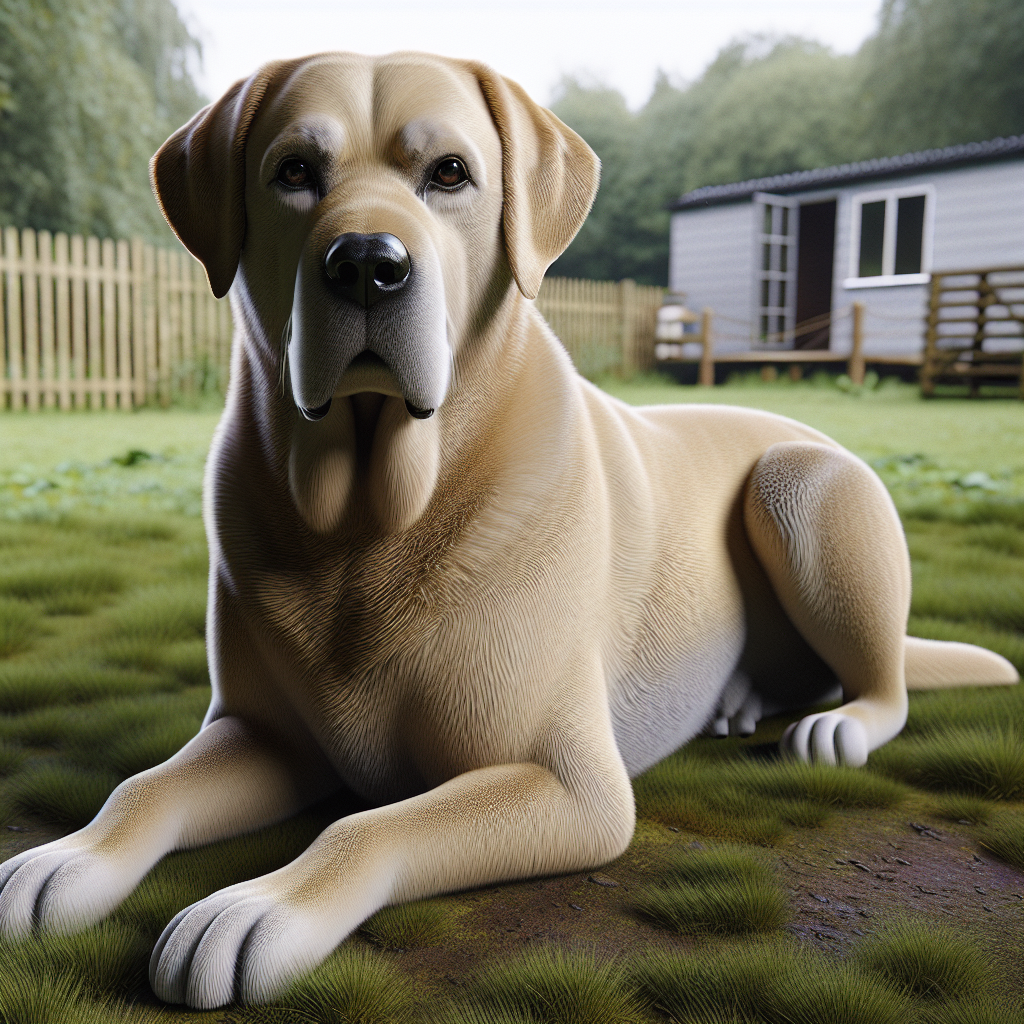Introduction

Dog fleas are small, wingless parasites that live off the blood of their hosts. Scientifically known as Ctenocephalides canis, these pests are notorious for causing discomfort and potential health issues for dogs. Addressing flea infestations is crucial not only for the well-being of dogs but also for the comfort and health of their human companions. Fleas can quickly multiply, leading to severe infestations that are difficult to control. Understanding the nature and impact of dog fleas is essential in effectively managing and preventing these infestations.
Definition of Dog Fleas
Dog fleas are ectoparasites, meaning they live on the surface of their hosts and derive their nourishment by piercing the skin and feeding on blood. These fleas are typically brownish-black and can range from two to three millimeters in length. With their specialized mouthparts, they latch onto their host’s skin, making them difficult to dislodge. Their bodies are laterally compressed, allowing them to move easily through the fur of dogs.
Importance of Addressing Flea Infestations
The presence of dog fleas is more than just a nuisance; it poses significant health risks to dogs and can also affect humans. Fleas can cause severe itching and discomfort, leading to excessive scratching and potential skin infections. In severe cases, flea infestations can lead to anemia in dogs due to blood loss. Furthermore, fleas are vectors for various diseases and can transmit pathogens that may affect both dogs and humans. Therefore, prompt and effective management of flea infestations is vital to maintaining a healthy environment for pets and their owners.
Identifying Fleas on Dogs
Identifying dog fleas at an early stage is crucial for preventing a minor problem from turning into a significant infestation. Recognizing the signs and symptoms of flea activity allows for timely intervention and treatment.
Signs and Symptoms
Dogs infested with fleas often exhibit signs of discomfort. Common symptoms include excessive scratching, biting, or licking of certain areas, particularly around the tail, neck, and abdomen. Hair loss, redness, and the presence of scabs or hot spots can also indicate a flea problem. In some cases, dogs may develop flea allergy dermatitis, a hypersensitive reaction to flea saliva, leading to severe itching and inflammation.
Visual Identification of Fleas
Visually identifying dog fleas can be challenging due to their small size and rapid movement. However, a close inspection of your dog’s coat, particularly in areas where fleas tend to congregate, can reveal these pests. Using a fine-toothed flea comb can help catch fleas and flea dirt, which are the feces of fleas that appear as tiny black specks. When placed on a damp paper towel, flea dirt will turn a reddish-brown color, confirming the presence of fleas.
Life Cycle of Dog Fleas
Understanding the life cycle of dog fleas is essential for implementing effective control measures. Knowing how and when fleas reproduce can help disrupt their population and prevent future infestations.
Stages of Development
The life cycle of dog fleas consists of four stages: egg, larva, pupa, and adult. After feeding on a host, adult female fleas lay eggs on the dog’s fur, which then fall into the environment, including carpets, bedding, and outdoor areas. These eggs hatch into larvae, which feed on organic debris and flea dirt. After several molts, the larvae spin cocoons and enter the pupal stage. Adult fleas emerge from the pupae when environmental conditions are favorable, seeking a host to begin the cycle anew.
Duration and Reproduction
The duration of the flea life cycle varies depending on environmental factors such as temperature and humidity. Under optimal conditions, the entire cycle can be completed in as little as two to three weeks. However, in less favorable conditions, it may take several months. Female fleas are prolific reproducers, capable of laying up to 50 eggs per day, making early intervention critical to preventing rapid population growth.
Types of Fleas Affecting Dogs
While the primary concern for dog owners is the dog flea, other flea species can also infest dogs, notably the cat flea. Understanding the different types of fleas that can affect dogs helps in choosing the appropriate treatment and prevention strategies.
Dog Flea (Ctenocephalides canis)
Ctenocephalides canis, commonly known as the dog flea, is specifically adapted to parasitize dogs. Although less common than cat fleas, dog fleas can still be a significant problem in certain regions. Like other fleas, dog fleas are capable of transmitting diseases and causing irritation and discomfort to their hosts.
Cat Flea (Ctenocephalides felis) on Dogs
Interestingly, the most prevalent flea species found on dogs is not the dog flea but the cat flea, Ctenocephalides felis. This flea species is highly adaptable and can infest a variety of hosts, including dogs, cats, and even humans. The cat flea is responsible for most flea infestations in dogs and is known for its ability to reproduce quickly and efficiently.
Health Implications of Fleas
The presence of dog fleas can lead to a range of health issues for dogs. It is important to understand these implications to ensure the health and comfort of your pet.
Skin Irritations and Allergies
One of the most immediate health effects of dog fleas is skin irritation. The bites of fleas can cause intense itching and discomfort, leading to excessive scratching. In some dogs, flea bites can trigger an allergic reaction known as flea allergy dermatitis, resulting in severe itching, inflammation, and secondary skin infections. Addressing flea infestations promptly can help prevent these allergic reactions and maintain healthy skin.
Potential for Disease Transmission
Beyond skin irritations, dog fleas can serve as vectors for various diseases. They are known to transmit tapeworms to dogs, which can lead to digestive issues and weight loss. In rare cases, fleas can also transmit more serious diseases, such as flea-borne spotted fever and even plague. While these occurrences are uncommon, they highlight the importance of effective flea control and prevention measures. Ensuring your dog is protected from fleas is a critical aspect of maintaining their overall health and well-being.
Preventative Measures
Regular Grooming and Inspection
Preventing dog fleas begins with consistent grooming and thorough inspections. Regular grooming helps maintain your pet’s coat and skin health while also providing an opportunity to check for signs of fleas. During grooming sessions, use a fine-toothed comb or a flea comb to meticulously inspect your dog’s fur, particularly around the neck, behind the ears, and near the tail—common hotspots for fleas. Look for adult fleas as well as flea dirt, which appears as small black specks on your dog’s skin.
Grooming sessions should be conducted at least once a week, but more frequent grooming may be necessary during peak flea seasons, typically in the warmer months. Not only does regular grooming help in early detection of fleas, but it also facilitates bonding with your pet and promotes overall health and well-being.
Environmental Controls and Cleaning
Effective flea prevention extends beyond your dog to their environment. Dog fleas can thrive in household environments, making regular cleaning essential. Start by vacuuming frequently, paying special attention to areas where your dog spends the most time, such as carpets, rugs, and upholstery. Vacuuming can help remove flea eggs, larvae, and adult fleas from your home.
Wash your dog’s bedding and any fabric that they frequently contact in hot water weekly. Consider using a pet-safe insecticide or natural flea repellent for additional protection on carpets and furniture. Environmental controls should also include managing outdoor spaces, such as keeping your lawn trimmed and removing debris where fleas might hide. Implementing these measures can significantly reduce the risk of flea infestations.
Treatment Options
Topical and Oral Medications
When prevention falls short, various treatment options are available for managing dog fleas. Topical and oral medications are among the most effective methods. Topical treatments, commonly known as spot-on treatments, are applied directly to your dog’s skin, usually between the shoulder blades. These treatments typically kill fleas on contact and can provide protection for up to a month.
Oral medications, administered in the form of chewable tablets, work by entering your dog’s bloodstream and killing fleas when they bite. Oral treatments often provide rapid relief and can be an excellent option for dogs with skin sensitivities that may react to topical treatments.
Consult with your veterinarian to determine the best treatment plan for your dog based on their health, lifestyle, and level of flea exposure. It’s essential to follow the recommended dosage and instructions to ensure effectiveness and safety.
Natural and Home Remedies
For those seeking alternative options, natural and home remedies can complement conventional treatments for dog fleas. Essential oils like lavender, peppermint, and cedarwood are known for their flea-repelling properties. Dilute these oils with water to create a homemade flea spray, but exercise caution, as some essential oils can be toxic to dogs if used improperly.
Apple cider vinegar is another popular home remedy. Adding a small amount to your dog’s drinking water or using it as a rinse after bathing may help repel fleas. Diatomaceous earth, a natural powder made from fossilized algae, can be sprinkled on carpets and pet bedding to dehydrate and kill fleas. Ensure you use food-grade diatomaceous earth and follow all safety precautions when applying it.
While natural remedies can be effective, they should be used as a supplement to, not a replacement for, veterinarian-recommended treatments.
Bathing as a Treatment Strategy
Effective Bathing Techniques
Bathing your dog is a simple yet effective method for managing and treating dog fleas. Begin by using lukewarm water to thoroughly wet your dog’s coat. Apply a flea shampoo, lathering it well and ensuring it reaches the skin. Pay special attention to flea-prone areas such as the base of the tail and under the legs. Allow the shampoo to sit for several minutes, as this increases its effectiveness in killing fleas.
Rinse your dog thoroughly to remove all traces of shampoo, as residue can irritate the skin. Use a towel to gently dry your dog, followed by a blow dryer on a low setting if necessary. Regular bathing, in conjunction with other treatments, can help keep flea populations under control.
Recommended Products
When selecting flea shampoos and conditioners, choose products specifically formulated for dogs and designed to target fleas. Look for shampoos containing natural ingredients like oatmeal or aloe vera, which can soothe irritated skin. Products containing pyrethrins or permethrin are effective against fleas, but always follow label instructions and consult your veterinarian if you have concerns about specific ingredients.
Consider pairing flea shampoos with conditioners that contain soothing agents to help maintain your dog’s skin and coat health. Regular use of these products can enhance their effectiveness and provide ongoing relief from dog fleas.
The Role of Flea Combs
How to Use Flea Combs
Flea combs are an essential tool in the fight against dog fleas, offering a chemical-free way to remove fleas and flea dirt from your dog’s coat. To use a flea comb, start by brushing your dog’s fur to remove any tangles. Then, run the flea comb through small sections of your dog’s coat, focusing on areas where fleas are likely to hide.
After each pass, inspect the comb for fleas or flea dirt, and dip it into a bowl of soapy water to kill any fleas you find. Use a paper towel to wipe the comb clean before continuing. Flea combing should be done regularly, especially during peak flea season, to help manage infestations and monitor for new ones.
Benefits and Limitations
Flea combs offer several benefits as part of a comprehensive flea control plan. They provide an immediate way to remove fleas without chemicals, making them ideal for sensitive dogs. Flea combing is also an excellent way to monitor the effectiveness of other treatments, as it allows you to assess the presence and severity of flea infestations.
However, flea combs have limitations. They require time and patience, and may not be sufficient as a standalone treatment for severe infestations. For best results, combine flea combing with other preventative and treatment measures to effectively combat dog fleas.
Environmental Management
Vacuuming and Cleaning Tips
Effective management of dog fleas requires diligent cleaning practices. Regular vacuuming is crucial, as it helps remove fleas, eggs, and larvae from carpets, rugs, and upholstery. Use a vacuum with a HEPA filter for optimal results, and focus on areas where your dog frequently rests.
Consider using a steam cleaner for additional sanitation, as the heat can kill fleas at all life stages. After vacuuming, promptly dispose of the vacuum bag or empty the canister to prevent fleas from reinfesting your home. Consistent cleaning can significantly reduce flea populations and prevent re-infestations.
Yard and Outdoor Area Maintenance
Outdoor areas can serve as breeding grounds for dog fleas, making yard maintenance an essential aspect of flea control. Keep your lawn mowed and trim any overgrown vegetation where fleas might hide. Remove debris, such as piles of leaves or wood, and consider using nematodes, natural predators of fleas, to treat your yard.
If your dog spends significant time outdoors, consider using a pet-safe insecticide or flea repellent on your lawn. Regularly inspect outdoor spaces for signs of fleas, and treat them as necessary to prevent fleas from migrating into your home. By managing both indoor and outdoor environments, you can create a comprehensive strategy for controlling and preventing dog fleas.
Long-term Flea Control
Managing dog fleas effectively requires a long-term approach that minimizes their impact and prevents future infestations. A sustainable and comprehensive strategy involves understanding the lifecycle of fleas, consistently monitoring your pet’s condition, and employing various methods to control and eliminate these pests.
Integrated Pest Management
Integrated Pest Management (IPM) is a holistic strategy that combines multiple practices to manage flea populations efficiently. This approach emphasizes understanding flea biology and ecology to create a sustainable control strategy. For dog owners, IPM might involve regular grooming and hygiene practices to reduce the likelihood of flea infestations. Regular vacuuming and washing of bedding and carpets can help eliminate flea eggs and larvae in the home environment.
Additionally, IPM encourages the use of biological control methods, such as introducing beneficial nematodes in the yard where fleas might breed. These microscopic organisms naturally prey on flea larvae, reducing their numbers without the use of harsh chemicals. The integration of these practices forms a robust defense against dog fleas and can significantly reduce their impact over time.
Professional Pest Control Services
For severe infestations, professional pest control services can offer a more intensive solution. These services have access to advanced tools and treatments that are not available over the counter. Professionals can accurately assess the extent of the infestation and apply targeted treatments that address both the adult fleas and their developing stages.
It is crucial to choose a pest control service that understands the specific needs of pets, ensuring that the methods used are safe for your dog and the home environment. Professional services can also provide valuable advice and ongoing support to prevent future infestations, tailoring their approach to suit the unique circumstances of your household.
Special Considerations for Puppies
Puppies are particularly vulnerable to flea infestations due to their developing immune systems and sensitive skin. Ensuring their health and comfort requires understanding the specific challenges that fleas present to young dogs and selecting appropriate treatments.
Puppy-Specific Symptoms
Puppies infested with fleas may exhibit symptoms that differ from adult dogs. In addition to the usual scratching and biting, puppies might experience more severe reactions such as anemia, which is a result of blood loss caused by numerous flea bites. This can lead to weakness, pale gums, and a decrease in activity levels.
Fleas can also transmit tapeworms and cause allergic reactions in puppies, leading to dermatitis and secondary infections. Being vigilant for these symptoms is crucial for early intervention and treatment.
Safe Treatments for Young Dogs
When treating dog fleas on puppies, it’s essential to use products specifically designed for their age and weight. Many flea control products for adult dogs are too potent for puppies and can cause harmful side effects. Always consult a veterinarian before administering any treatment to ensure it is safe and effective for your puppy.
Natural remedies, such as gentle flea combing and bathing with mild soap, can help reduce flea numbers without exposing puppies to chemicals. Some natural oils, like lavender or chamomile, might also provide relief, but it’s important to use them cautiously and under professional guidance.
Preventing Future Infestations
Prevention is a critical component of long-term flea control. By adopting proactive measures, you can significantly reduce the risk of dog fleas becoming a recurring issue in your home.
Regular Check-ups and Monitoring
Regular veterinary check-ups are essential in maintaining your dog’s health and catching any flea issues early. Your veterinarian can provide tailored advice on flea prevention and recommend suitable products based on your dog’s lifestyle and environment.
In addition to professional check-ups, routinely inspecting your dog’s coat for fleas, flea dirt, and signs of irritation can help catch infestations before they escalate. Early detection allows for prompt treatment, minimizing discomfort for your pet.
Use of Preventative Products
Several preventative products are available to protect dogs from fleas. These include topical treatments, oral medications, and flea collars. Each has its benefits, and the choice depends on your dog’s specific needs and your preferences.
Topical treatments are applied directly to the skin and kill fleas on contact, while oral medications work systemically to protect against fleas for a specified period. Flea collars can offer long-lasting protection and are particularly useful for dogs that spend a lot of time outdoors. Consistent use of these products can keep dog fleas at bay and contribute to a flea-free environment.
Common Myths and Misconceptions
Despite common knowledge, several myths and misconceptions about dog fleas persist. Understanding and debunking these myths is essential for effective flea control.
Debunking Flea-Related Myths
One common myth is that dog fleas only infest dirty animals. In reality, fleas are opportunistic and can infest any dog, regardless of cleanliness. Similarly, some believe that fleas only thrive in warm weather, but indoor environments can provide suitable conditions for year-round infestations.
Another misconception is that once fleas are gone, they won’t return. Without preventive measures, fleas can quickly re-establish in the home, as their eggs and larvae can survive in carpets and furniture.
Understanding Flea Behavior
Understanding the behavior of fleas can aid in their control. Fleas are small, wingless insects that jump onto their hosts to feed on blood. They are prolific breeders, with a single flea capable of laying hundreds of eggs in its lifetime. These eggs fall off the host and develop into larvae in the environment, making it crucial to treat both the pet and the home to break the flea lifecycle.
FAQs About Fleas on Dogs
Dog owners often have questions about dealing with fleas. Addressing these queries with expert insights can help demystify flea control and provide practical solutions.
Common Questions and Expert Answers
One frequently asked question is, “How can I tell if my dog has fleas?” Common signs include excessive scratching, biting, and the presence of flea dirt (tiny black specks) in the dog’s coat. A flea comb can help detect these pests.
Another common query is, “Are fleas harmful to my dog?” Besides causing discomfort, fleas can lead to more severe health issues, such as anemia, allergic reactions, and tapeworm infections.
Resources for Further Information
For more information on dog fleas and effective control methods, consult reputable sources such as veterinary clinics, pet care websites, and professional pest control services. These resources offer updated advice and support to help you manage flea infestations effectively and maintain your dog’s health.
Quick Takeaways:
Dog fleas are a persistent nuisance for pet owners, and understanding them is crucial for effective management. Fleas on dogs can cause discomfort, allergic reactions, and even transmit diseases. Recognizing signs of flea infestation in dogs is the first step in addressing the problem. Common indicators include excessive scratching, red bumps, and flea dirt, which looks like small black specks on the dog’s coat.
One of the most effective ways to tell if your dog has fleas is by using a flea comb. This tool is designed to catch fleas and remove flea dirt from your pet’s fur, serving as both a diagnostic and a treatment aid. Once you’ve identified a flea problem, it’s important to choose the best flea treatment for dogs. Options range from topical applications and oral medications to flea collars.
Natural remedies for dog fleas, such as diatomaceous earth or essential oils, can be effective but should be used with caution to avoid adverse reactions. Alongside treatment, flea prevention for puppies and adult dogs is essential. Regularly cleaning your pet’s bedding and vacuuming your home can significantly reduce the chances of reinfestation. Additionally, homemade flea shampoos can be a gentle way to treat and prevent fleas.
Understanding the dog flea lifecycle and reproduction is key to controlling infestations. Fleas reproduce rapidly, and their eggs can fall off your pet, hatching in carpets and upholstery. Therefore, a comprehensive flea control for dogs and home is necessary, including treating your yard to get rid of fleas.
FAQs:
1. How can I tell if my dog has fleas?
Detecting fleas on your dog involves looking for specific signs. Common symptoms include frequent scratching, biting at the skin, and signs of flea bites on dogs such as red, irritated spots. Additionally, using a flea comb can help you identify fleas or flea dirt on your dog’s coat. If you suspect an allergy, look for dog flea allergy symptoms like hair loss or inflamed skin.
2. What is the best flea treatment for dogs?
The best flea treatment for dogs varies depending on your pet’s needs and lifestyle. Popular options include topical treatments, oral medications, and flea collars. Each has its own benefits; for instance, topical solutions provide broader pest control, while oral tablets work quickly. It’s advisable to consult with a veterinarian to choose the most suitable treatment for your dog.
3. Are there natural remedies for dog fleas that I can use safely?
Yes, natural remedies for dog fleas can be effective, though they may require more frequent application than commercial products. Options include using diatomaceous earth around your home, bathing your dog with a homemade flea shampoo that includes essential oils like lavender or peppermint, and ensuring your pet’s environment is clean. However, always test essential oils for allergic reactions and consult a vet before use.
4. Can dog fleas live on humans?
While dog fleas prefer canine hosts, they can bite humans, leading to itchiness and irritation. However, they cannot survive on human hosts for long periods. Ensuring proper flea control for dogs and home will minimize the risk of flea bites to humans. Maintaining cleanliness and using flea prevention tips for dogs will also help protect both pets and family members.
5. How do fleas jump on dogs, and how can I prevent it?
Fleas are equipped with powerful legs that allow them to jump onto passing hosts, such as dogs. They often inhabit areas where pets frequent, like yards or parks. To prevent fleas from jumping onto your pet, consider regularly mowing your lawn, removing debris, and using outdoor flea control methods. Additionally, maintaining regular flea prevention practices on your pet, such as treatments or collars, can further deter fleas.
Conclusion:
In conclusion, managing dog fleas requires a multifaceted approach, combining vigilant monitoring, effective treatments, and consistent prevention strategies. Understanding the signs of flea infestation in dogs and employing the right tools, such as flea combs and appropriate treatments, are initial steps in tackling the problem. Moreover, integrating natural remedies and maintaining a clean environment play a crucial role in preventing future infestations.
Flea prevention tips for dogs, including regular grooming and environmental control, are vital for maintaining your pet’s health and comfort. By addressing the dog flea lifecycle and implementing comprehensive flea control measures for both your dog and your home, you can effectively minimize the impact of these persistent pests. Ultimately, the goal is to ensure your pet lives a happy, itch-free life while safeguarding your household from flea-related issues.
References:
1. https://www.petmd.com/dog/general-health/how-to-handle-fleas-on-dogs
2. https://nexgard.com.au/dog-parasites/fleas
3. https://en.wikipedia.org/wiki/Dog_flea
4. https://www.vet.cornell.edu/departments-centers-and-institutes/riney-canine-health-center/canine-health-information/fleas
5. https://bettervet.com/resources/pet-health-care/how-to-get-rid-of-fleas-on-dogs
Our solution eradicates fleas on contact without harmful chemicals, ensuring a safe environment for your pets and family. Easy to use and highly effective, SayByeBugs helps you maintain a flea-free home. Learn more and order today at SayByeBugs.com




